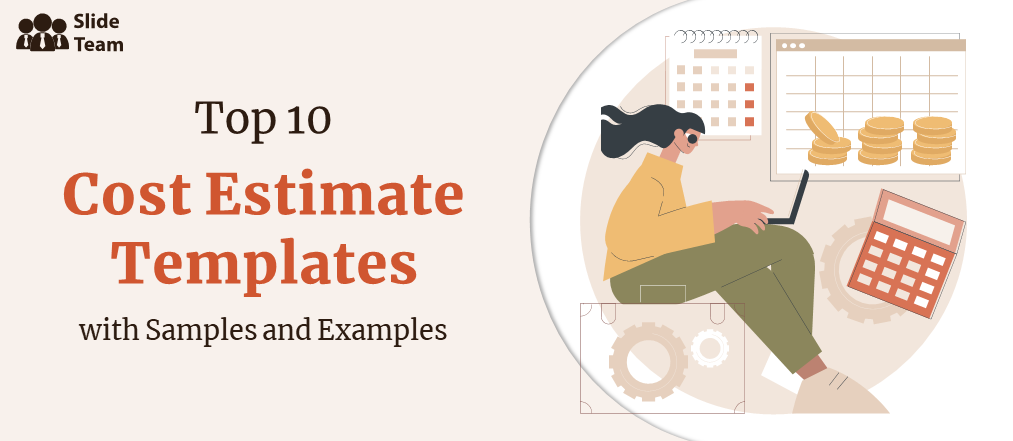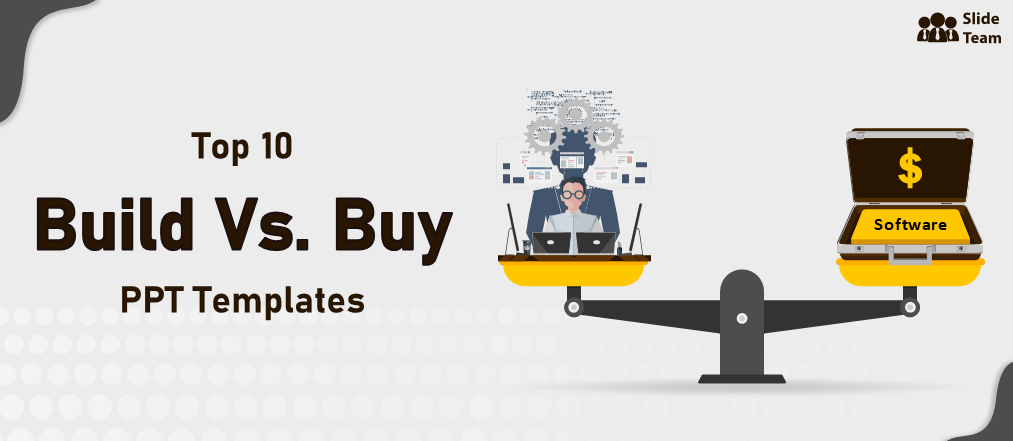Necessity is the mother of invention, and the best example of this is the economic crisis that sprung up during World War II, causing businesses to scramble for survival. Industries suffered because resources went scarce while demand went through the roof. To survive within this chaos, industrialists needed to discover new ways to:
- Meet the existing demands
- Keep up with the rising demands
- Maintain their profitability
- Thrive in a growing pool of competitors
Amid the brunt that the entire world bore, in particular Japan, their native company, Toyota came up with the idea of Lean Technology that helped them rise back up from the ashes like a Phoenix. Ever since, the entire world has adopted this technique for effective management and frequently uses Japanese-derived terminology as Kanban, Kaizen, Poka-Yoke, etc.
So, what is the hype around lean management and how do you implement a lean process in your manufacturing, production, or general management? Let’s look at an overview.
Lean Management: Processes and Need
The underlying idea of lean management is that demand should drive supply and production. It means that even if an organization/industry is capable of production, manufacturing, or distribution, only the customer's value for your products or services should govern the pace of your management. By applying this principle, three things will happen:
- Unnecessary activities is curbed and waste management is ensured
- Resources are judiciously utilized
- Customers are served according to the demand dynamics, allowing room for continuous improvement
Thus, a lean process comes to the aid of organizations and industries that want to function efficiently and utilize their resources judiciously.
But much goes into achieving this state of calibrated stability such as surveying the market demands, identifying the customer demographics, coordinating the supply chain, continuously monitoring the inventory, and so on. It’s important to plan and update workers on the same.
Plug-in SlideTeam
Presentations have long served the purpose of demonstration and training in the corporate world. But to create such standard PPT Layouts that are both professional and purposeful can often be tedious. SlideTeam offers its best-in-class seven Lean Process Templates that are designed on the same lines as industry standards. With our lean process templates, your employees can monitor the implementation of calculated steps in creating efficient management systems. Let’s explore.
Template 1: Lean Process Improvement Template
Are you eyeing improvement for your organization, be it the corporate sector, healthcare unit, or any other service? Then investing in lean management is the ideal roadmap for you. Make use of this comprehensive set of PPT Slides to lay down the foundation of cost-effective resource management with minimal wastage. Deploy this Japanese technique and incorporate continuous improvement (or Kaizen), monitored inventory (or Kanban), or consistent factory rate (or Heijunka) to bring about efficiency in your work operations. To start editing this PPT Presentation, click on the link below.
Template 2: Lean Process Mapping Template
Illuminate the elements of lean mechanism for your audience with this comprehensive PPT Presentation. Explore in depth, the terminology, 5-step processes, and returns for the organization. Discuss models, pros and cons, and Lean Processes’s overall benefits in the form of efficient resource management, all in this PPT Compilation. Without further ado, download this educational PPT Theme now!
Template 3: Lean Process Analysis Template
Toyota Production System claimed they have benefited from Lean Technology, but have you? Create a performance report on the aftereffects of implementing lean processes in your organization with this PPT Layout. Reveal its impact on cost reduction, capacity improvement, and equipment effectiveness by comparing their current values with the ones before lean implementation. Use this Excel-linked Graph Template to depict this transition benefiting your business. Download now.
Template 4: Lean Process Principles Template
Your audience can be acquainted with the five steps or principles of lean processes, as it is also known, with this PPT Layout. Use this PPT Sketch to bring about conservation of resources, reducing wastage, and keeping up with instantaneous demands. Focus on identifying value, mapping its value chain, creating its flow, generating pull, and continuously seeking perfection, using this single-slide. Grab this PPT Design from the link below and customize individual steps according to your organization's function.
Template 5: Lean Process Value Stream Framework Template
Establish a lean process specific to your organization and identify what each step implies with this editable PPT Diagram. Point out the five steps namely value, value stream, flow, pull, and perfection and add the main responsibilities under each. Focus on the cyclic nature of these five steps and enhance the visualization using relevant infographics and icons. Download it now.
Template 6: Lean Process Budget Template
Represent data to show the cost-effectiveness and budgeting as a result of implementing lean processes in your organization with this PPT Template. Present a snapshot of your annual cost savings over the years and represent the reason why the growth has been upward and the revenue on a rising curve. Grab this graphical PPT Layout to demonstrate the benefits you have reaped over the years.
Template 7: Cyclic Lean Process Framework Template
Here is a cyclic diagram to share the essence of a five-step lean process. From identifying the value of your product or service, creating a stream for its effective delivery, followed by monitoring its seamless flow, keeping track of its demand, to continuously improving this cycle, use this PPT Slide to generate awareness. What each step implies in your work functionality, add it as comments or brief descriptions. Grab this editable PPT Layout now!
Download from this collection now to simplify lean management implementation in your organization.
PS: Risk mitigation complements lean management. Ensure your preparedness in dealing with major business inconveniences by planning, and developing contingencies with our dedicated PPT templates as collated in this blog.
FAQs on Lean Process Templates
What is a lean process example?
A Lean Process is a methodology used to streamline production and minimize waste. An example of this process is the Toyota Production System, also known as Just-in-Time (JIT) production. In JIT, only the necessary materials and components are produced and delivered as needed for assembly, reducing excess inventory and saving storage costs. The focus is on maximizing efficiency and reducing waste, leading to a more streamlined, cost-effective production process.
Where is Lean Methodology implemented in our day-to-day lives?
Here are five examples of how Lean Methodology is applied in different industries:
- In Manufacturing: In a manufacturing setting, Lean is used to streamline production processes, reduce waste, and improve efficiency. For example, a manufacturer might implement the Just-in-Time (JIT) production strategy, use Value Stream Mapping to identify areas for improvement, and implement Total Productive Maintenance (TPM) to improve equipment reliability.
- In Healthcare: Lean is used to improve the delivery of patient care, reduce wait times, and increase patient satisfaction. For example, a hospital might use Lean techniques to streamline the admissions process, improve the flow of patients through the hospital, and reduce the time it takes to deliver test results.
- In Service Industries: Lean is used to improve the customer experience and reduce waste. For example, a bank might use Lean techniques to streamline account opening processes, reduce wait times, and improve the accuracy of transactions.
- In Construction: Lean is used to improve project delivery and reduce waste. For example, a construction company might use Lean techniques to reduce the time it takes to complete a project, improve the quality of work, and minimize rework and delays.
- Software Development: Lean is used to improve software quality, reduce waste, and increase efficiency. For example, a software development team might use Lean techniques to implement Agile development methodologies, use continuous integration and delivery, and implement test-driven development.
What is the process of Lean Management?
The Lean Management process typically involves five steps:
- Identify value: Determine what the customer values and focus on providing that value.
- Map the value stream: Create a visual representation of the steps involved in creating and delivering a product or service to the customer.
- Create flow: Ensure a smooth and efficient flow of materials, information, and decisions with minimal interruption.
- Establish pull: Implement systems that allow production to be driven by actual customer demand rather than forecasting or speculation.
- Seek perfection: Continuously strive to improve the process, eliminate waste, and increase value to the customer.
These steps are part of a continuous improvement cycle in which data and feedback are used to drive ongoing improvement and refine the process over time. The goal of Lean Management is to create a more efficient and effective production process while maximizing value for the customer and minimizing waste.
What are the three types of waste in Lean?
The three types of waste in Lean are:
- Muda (Japanese for "waste"): Refers to any activity or process that does not add value to the customer and is a source of inefficiency and waste.
- Mura (Japanese for "unevenness"): Refers to inconsistencies or fluctuations in the production process that cause inefficiency, waste, and overburden.
- Muri (Japanese for "overburden"): Refers to processes or systems that are overly complicated, requiring excessive effort and resources, and leading to inefficiency and waste.
These wastes are often collectively referred to as the "3Ms" of Lean and are the focus of Lean improvement efforts. The 3Ms aim to eliminate or minimize them in order to streamline processes, increase efficiency, and deliver maximum value to the customer.
What are the techniques used in Lean?
There are many techniques used in Lean methodology; some of the most common include:
- Value Stream Mapping: A visual representation of the steps involved in creating and delivering a product or service to the customer, used to identify areas for improvement.
- Kanban: A system for visualizing and managing the flow of materials, information, and work used to reduce waste and increase efficiency.
- 5S: A system for organizing and maintaining a clean and organized workplace, consisting of the steps, Sort, Simplify, Sweep, Standardize, and Sustain.
- Total Productive Maintenance (TPM): A maintenance strategy involving all employees in equipment maintenance and improvement, aimed at increasing efficiency and reducing waste.
- Kaizen: A Japanese term for continuous improvement, used to describe a culture and approach that focuses on making small, incremental improvements over time.
- JIT (Just-in-Time): A production strategy in which products are manufactured and delivered to the customer just in time for use, reducing waste, and increasing efficiency.
- Poka-Yoke: A mistake-proofing technique to prevent errors and defects in processes and products, increasing quality, and reducing waste.
- Jidoka: It is a Japanese term that refers to the concept of autonomous automation, also known as "intelligent automation."Jidoka emphasizes the importance of quality control and encourages continuous improvement by allowing machines to identify and report problems rather than relying solely on human inspection.
- Heijunka: It is a Japanese term that refers to level production or "smoothing" in Lean Manufacturing. Heijunka aims to even out production by reducing fluctuations in demand and ensuring that the factory operates at a steady and consistent pace.
- Takt time: It is a metric used in Lean Manufacturing that represents the rate at which products must be produced to meet customer demand. It is calculated by dividing the total available production time by the number of units required to be delivered.
- Andon: A visual signaling system used to communicate work status and identify problems or issues in real-time, allowing for quick and effective resolution.
- Root-Cause Analysis: It is a problem-solving technique that is used to identify the underlying cause of a problem or issue rather than just addressing the symptoms.
- Single-Piece Flow: A production process in which products are manufactured one at a time rather than in batches, reducing waste, and increasing efficiency.


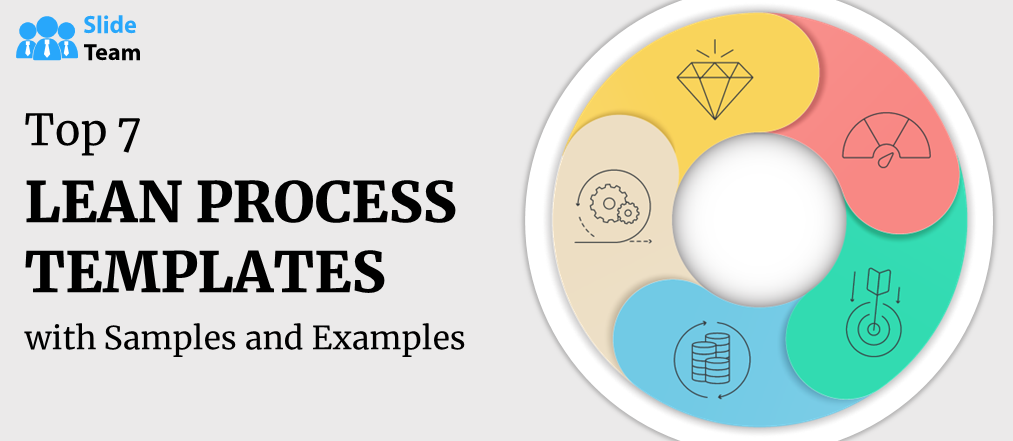


 Customer Reviews
Customer Reviews



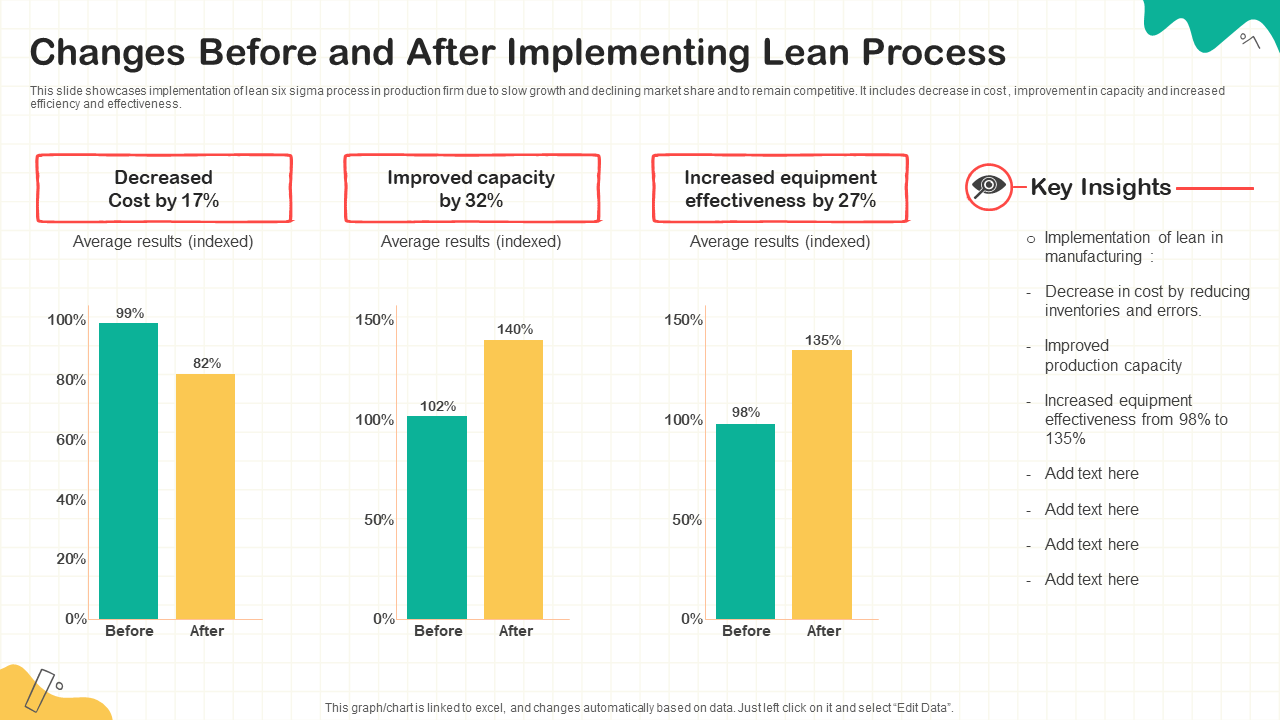
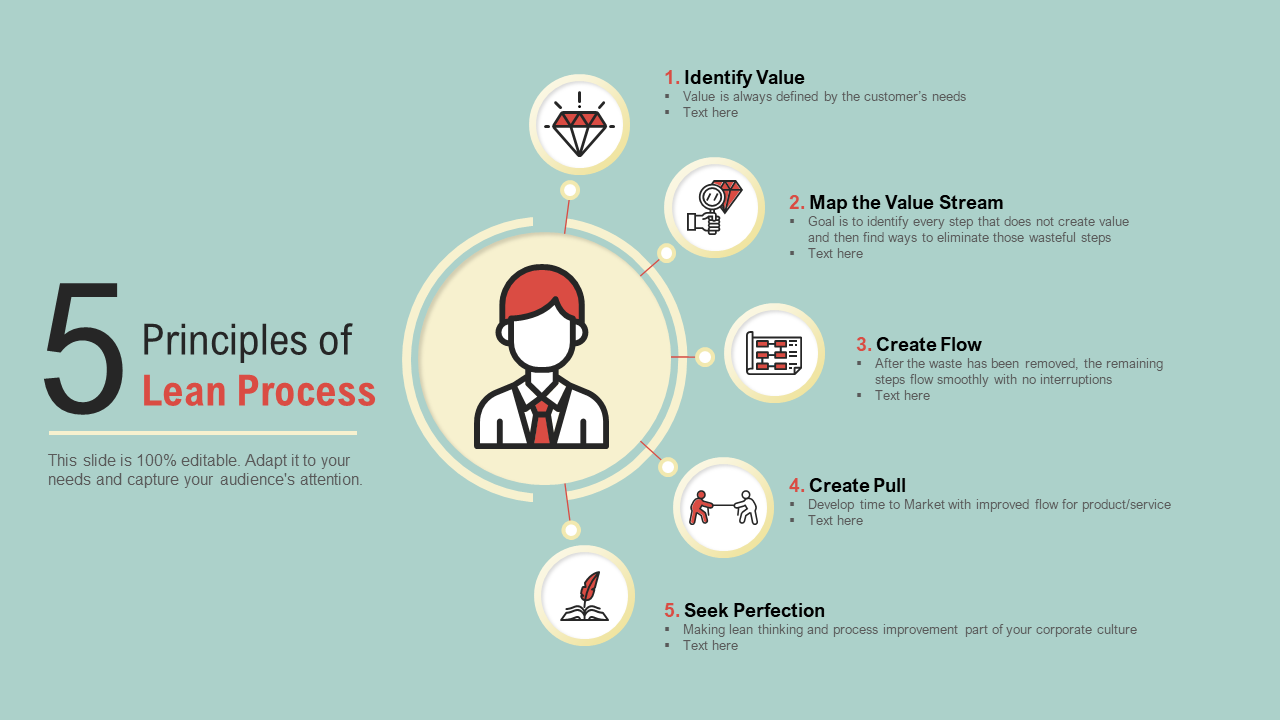
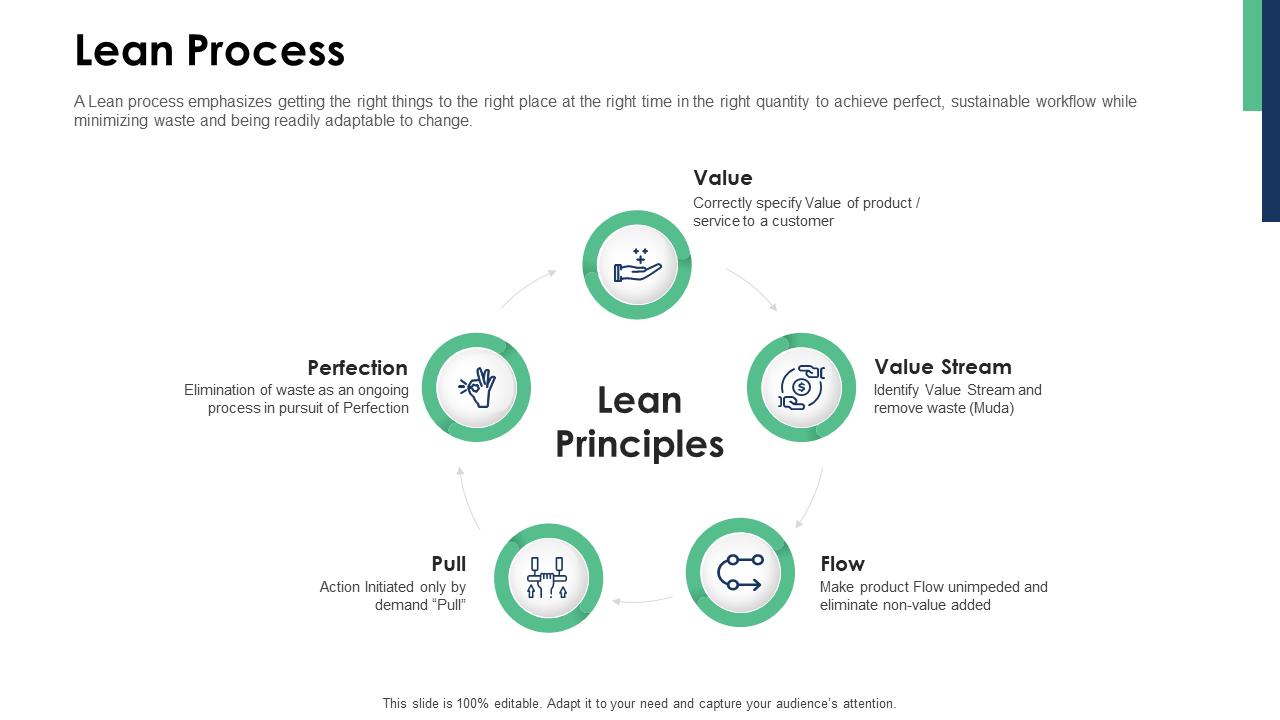
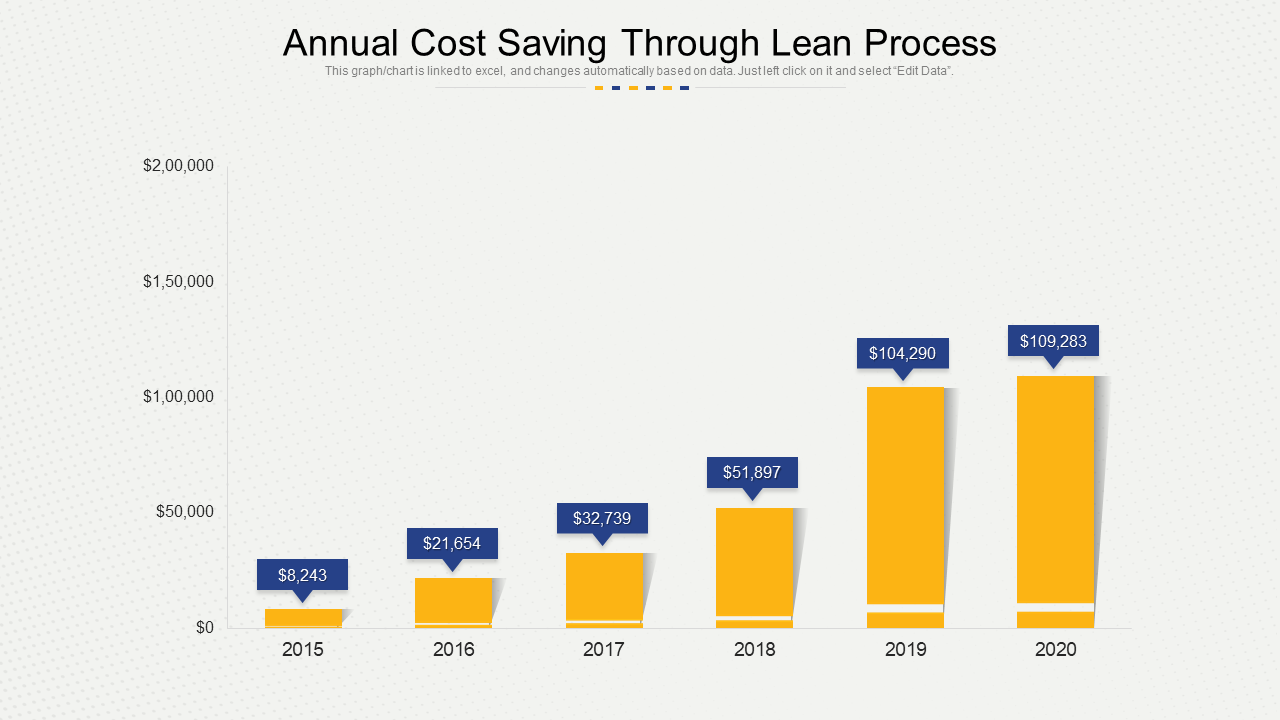
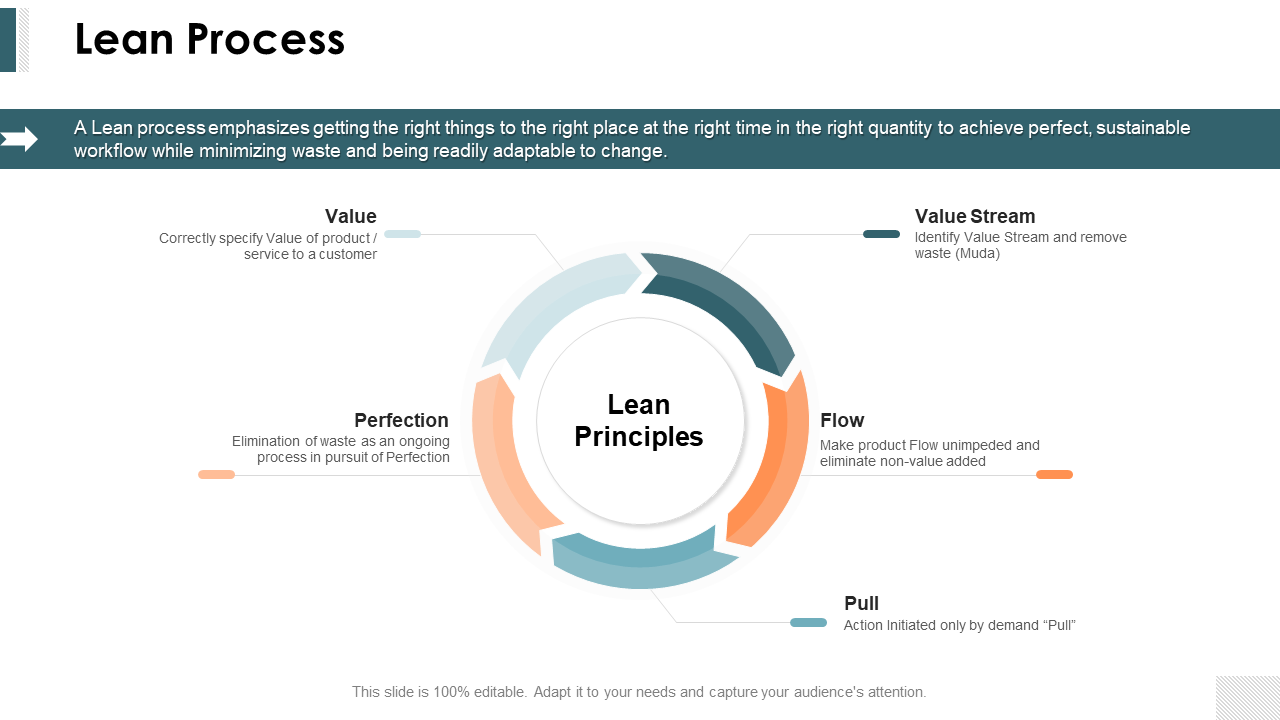





![Top 10 Balance Sheet Templates to Differentiate Your Company's Profits, Debts, and Assets [Free PDF Attached]](https://www.slideteam.net/wp/wp-content/uploads/2022/06/1013x441no-button-1-1013x441.jpg)
